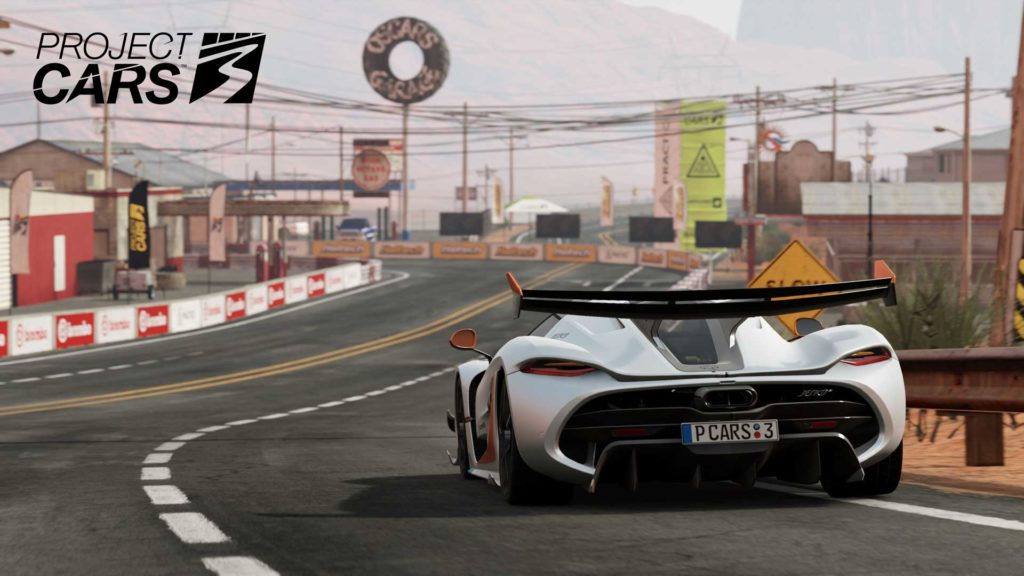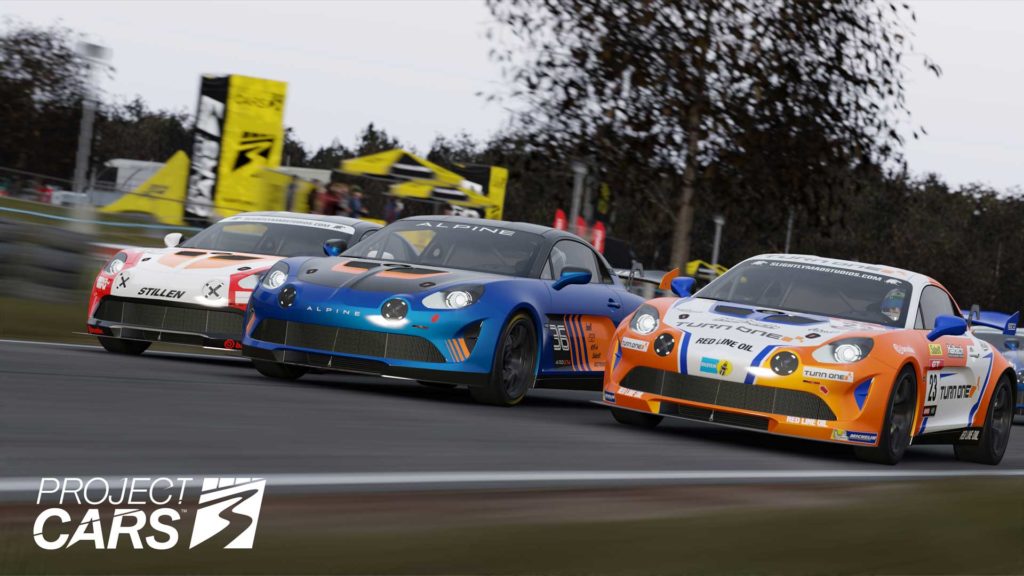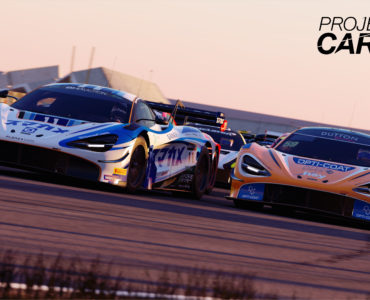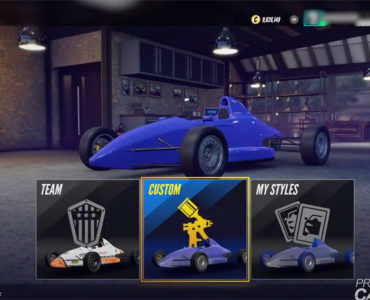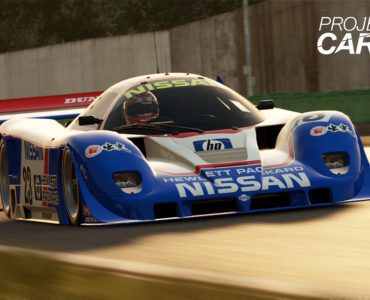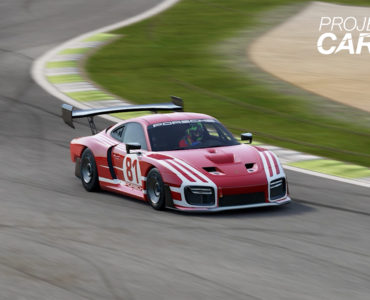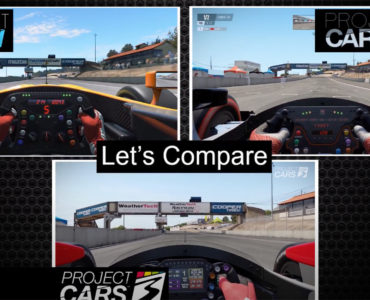Slightly Mad Studios have released a new developer blog and some new preview images of their Project CARS 3 title, touching on what maybe is the biggest addition the third installment of the franchise – Car Customization.
First revealed with the initial announcement, the details on the sought-after feature were pretty sparse so far and the lengthy dev blog below does not fully clear up all questions either. While the blog goes into pretty deep into the possibilities of physics upgrades including engine, suspension and tire upgrades, there still is no definite word if and how far players can visually upgrade their cars.
Seen in the trailers so far have been changeable rims and paint schemes but not “street car to race car” visual upgrades and bodyparts that were available in the SMS-developed Need for Speed Shift franchise – Project CARS 3 upgrade systems seems to be entirely physics-based as none of the preview screen have showed modified “in-between” kind of cars, either showing road cars or realistic GT3 & GT4 class variants.
For more details, check out the blog below!
Having some fun with car upgrades along with the physics and handling team on Project CARS 3. A 600hp ???66 ???Mustang? On vintage tyres? Heck, yeah!
Nick Pope: Principal Vehicle Handling Designer:??For Project CARS 3 we had the opportunity to add something we haven???t brought to the franchise before: Vehicle Upgrades. After discussing it with the team we quickly started to see the benefits to the wider game that they could bring. Firstly, upgrades bring with them more of a connection, greater agency, to the vehicles that players have worked hard to purchase by earning credits in their races. That connection between car and driver matters in real-life racing, and we want it to matter in our game as well. If you find a car that you really like, you can now take it on a journey through large parts of the career with you???you don???t have to abandon it once you progress and the competition steps up a level, you can treat it to a few new parts and keep enjoying it, let the car be the hero too!
Another huge benefit is the variety that upgrades bring. Upgrades effectively bolster our (already impressive) vehicle roster meaning players can move cars further up the classes, we can have much wider variety in the races, with a sort of ???run-what-ya-brung??? feel. You can take one of your favourite road cars and compete against the thoroughbred race cars if you want. That really fits not only into the whole ???weekend warrior to racing legend??? component, but also subscribes to what it can be like in the real-world where, you can turn up at a local club race or track day in your tuned M3 and fight it out with the latest supercars.
And finally, a big goal for Project CARS 3 was to give players the opportunity to fine-tune and tailor their own experience. Our improved optional driving assists and aids have achieved that from a player skill standpoint, and upgrades will add to that from an overall player-experience one. Upgrades add more layers to allow players to choose how they want to play, not from settings in a menu, but by letting them create vehicles that feel and handle closer to what they want from their cars. If you???re more confident, you might just focus on power upgrades and manage the lack of traction with your driving talent. If you???re more cautious, you might start by focusing on making the handling safer and reducing your time in the barriers. The combinations are almost limitless and we???re really looking forward to seeing what creations players dream up???from out-and-out handling kings designed to dominate tight circuits to cars made for high-speed ovals, and everything in-between.
Jussi Karjalainen: Handling QA Lead:??The other important point, of course, is the authentic nature of the upgrades.
Nick Pope: Principal Vehicle Handling Designer: Yes. I love the fact our upgrades are basically elements of our physics engine that are already there. We???re actually modifying the engine to have more power, we???re simulating adding a turbo and what that would do to the torque curve, and we are improving the suspension to perform better, but through all of this, we???re not ???cheating??? the system to produce similar results, we???ve modelled these parts according to how they will affect cars out in the real world.
David Kirk: Principal Physics Programmer:??The upgrades work using the underlying physics, so a suspension upgrade only affects the suspension components and setting ranges of the suspension. A weight reduction only reduces the weight, and maybe shifts the distribution of weight a little bit. A tyre upgrade only gives you better tyres. The engine upgrades add more power (at various points of the RPM range depending on the upgrade type). If you???re building a car with just engine power, but were already lacking grip, you???ll struggle even more. If you just put better tyres on a car, you won???t increase your top speed on straights, beyond getting a faster exit from the previous corner.
Casey Ringley: Vehicle Technical Art and Handling:??And things like the turbo upgrades are not simple modifiers on torque either. We tell the turbos to spin up for more boost, and in many cases this also means more lag. The realistic secondary effects are all in place, can be felt as you drive, and may well change the optimal approach to driving any given car.
David Kirk: Principal Physics Programmer:??Right, and this is all tied together by the PIR (Performance Index Rating) system???the thing that keeps cars balanced when you upgrade them. That???s really what makes all these authentic upgrades ???work??? from a racing perspective. PIR for each car isn???t based on certain values for certain parts but is a complex model of what happens on each car. Probably easier to explain using an example: Adding lots of power to a front-wheel drive car might not increase the performance rating as much as it would on an AWD car, because it simply can???t put the power down. The physical size, CoG (Centre of Gravity) height, geometry, all the unique aspects of the car affect how each upgrade will change its rating, and that???s why simply sticking more power on a car that has no handling won???t necessarily move its PIR.
Jussi Karjalainen: Handling QA Lead:??What David is saying is???big number mean faster car. Small number mean slower car! ??
David Kirk: Principal Physics Programmer:??Thanks for clearing that up, Jussi! Overall, not just, say, top-speed or acceleration. And, of course, all that means cars with similar numbers should turn close laptimes, regardless of the combination of upgrades.
Jussi Karjalainen: Handling QA Lead:??That???s the key there. It should be pretty much universal. Same PIR means same performance. Of course, the track type will affect this as it will in the real world. A car that???s all power at PIR 500, and a car that???s all grip at 500PIR, will do different lap times around Monza and Monaco, for example.
Casey Ringley: Vehicle Technical Art and Handling:??And all of this really adds to the experience of finding out what works well for each particular vehicle. It???s also a good lesson in what works well for you, as a player. Most people quickly add ???all the power??? when upgrading their first vehicle and quickly discover that just adding more power doesn???t always result in a quicker car.
David Kirk: Principal Physics Programmer:??The PIR is a universal number and calculated to give a balance between circuit types. So when you upgrade just the power of a vehicle, there???s a limit to what the tyres can put down, which means you???ll get a gain in PIR due to the higher top speed, but lower speed acceleration may not improve at all. That part of the PIR calculation takes into account ???useable power???: adding grippier tyres enables more power to be used, so then you???ll see bigger jumps in PIR when you add the power upgrades. If you???re getting wheel-spin and bogging down in fourth gear, you???re not really improving the car that much. Peak cornering speeds won???t change with power upgrades either, but tyres, weight, and aero upgrades may well increase, so you get PIR increases from that. Also, the ???useable power??? calculation considers the CoG height, weight distribution, and drivetype. So a front heavy FWD car may actually be able to put down as much power as a front heavy RWD, and 4WD cars can use the most power. Which I think leads to the inevitable and, for us, fun question???the ideal starting point in-game and which cars are the most fun to upgrade.
Jussi Karjalainen: Handling QA Lead:??Well, before we talk about which cars, the most important upgrade I think are the tyres early on. I remember an old quote by Craig Wilson, Race Engineer to Jenson Button at BAR-Honda back in 2003: ???Tyre improvements are the quickest way to improve the performance of any car. Generally, the time gain is equal to, or greater than, all the other factors put together.???
Casey Ringley: Vehicle Technical Art and Handling:??Yeah, Jussi nailed it in terms of where to begin upgrading. Treat it like upgrading a real car. Start with tyres, brakes, and suspension to get the most solid platform before dumping power on top.
Jussi Karjalainen: Handling QA Lead:??As for what car, I think I???d go straight for the Toyota GT86. It starts off pretty slow, but can be upgraded to quite something, right? The GT86 will only ???fall apart??? because it???s just so tiny compared to what you want to have in a car of that performance. And the Mitsubishi Lancer Evolution VI TME is a great starter as well.
Casey Ringley: Vehicle Technical Art and Handling:??You can go pretty far even with the starter cars, but you???re not quite going to be pulling 1000hp out of the GT86 4-banger, and the short wheelbase and narrow track width will eventually become issues even if you upgrade the suspension and tyres. That said, you can make it an incredibly light and nimble little machine that will be able to cut off a lot of the competition at the knees on more technical tracks.
Jussi Karjalainen: Handling QA Lead:??Yup, you???re free to just pile on power to the GT86 for sure. But it???s a car designed for 200-odd horsepower, with narrow, lower-end tyres and suspension to match???but having said that, I have a soft spot for the go-kart that is the GT86 with primarily handling and grip upgrades. It just sticks and sticks, and it???s hard to find the limit where it???ll actually start giving up. Another great upgrade path is taking one of the GT4 cars and just drown it in power. There???s something about taking a carefully balanced, lower-end GT car and then ???ruining??? it???hehe!
David Kirk: Principal Physics Programmer:????Jussi makes a really important point actually???balanced tuning is the key to great performance. There???s only so much power you can throw at an FWD car before you start losing the ability to make any use of it. For example, you???ll be going faster in a straight line, but you won???t stop or turn any better, and it???ll become easy to power understeer in a FWD car or kick the tail out with the throttle on an RWD.
Jussi Karjalainen: Handling QA Lead:??On the other side of the upgrade scale, some of the non-upgradeable racing cars are pretty damn fast, but the Koenigsegg Jesko is already an outrageous beast by itself, and only gets faster from there. Might not be the fastest on every track, but it???s pretty damn nuts. In terms of outright power, some of the electrics might have it licked, but they???re heavier and generally don???t have the Jesko???s aero. So the Jesko starts at around 1300p, but the fuel injection upgrade takes it to 1,600hp or so.
Casey Ringley: Vehicle Technical Art and Handling:????Yeah, the Koenigsegg Jesko is a neat one for upgrade authenticity. It has a couple of different engine modes depending on what fuel is used; lower boost pressure and around 1,280hp on petrol, but increased boost and up to 1,600hp when running E85 ethanol. We model the same changes in ours with boost pressure and ignition timing changes.
Nick Pope: Principal Vehicle Handling Designer:??Personally,I really enjoy bringing older supercars up towards more modern-day performance. It???s great to compete with some of the greatest cars of their day that maybe didn???t age quite as well as expected because their performance is sometimes overshadowed by advancements in vehicle technology, so making them more relevant and competitive is seriously rewarding and fun.
Jussi Karjalainen: Handling QA Lead:??Yeah, the main reason some of those analogue supercars from the 1980s we love are ???slow??? is due to the tyres.
Casey Ringley: Vehicle Technical Art and Handling:????My personal favourite is the KTM X-Bow GT4. GT4 cars, as a rule, tend to be heavily restricted, and this one especially so. To fit in the GT4 performance window it has a high ride-height cutting roughly 30% off aero performance and maybe 200hp off what the engine is capable of???and then they add over 100kg of ballast weight. Using the upgrade system to remove all those restrictions turns it into the low-flying spaceship it looks like, and it???s a fantastic drive.
Jussi Karjalainen: Handling QA Lead:??Wait, can we put a turbo on the RS1600 Escort?
Casey Ringley: Vehicle Technical Art and Handling:??Heck yeah!
Jussi Karjalainen: Handling QA Lead:??I need to check this out. I may need to change my vote. Also my pants! Awww, actually, it only peaks out at only 281hp. I mean 281hp supercharged horses on an 850kg car on vintage tyres is nothing to sneeze at, but a 400hp Escort would have been hilarious! Oh, the Mustang ???66 goes to over 600hp ??? on the same tyres ??? now??this??sounds really wild! I gotta go, guys, something urgent I need to do ???
….
Project CARS 3 will be coming to the PC, Playstation 4 & Xbox One??starting August 28.



